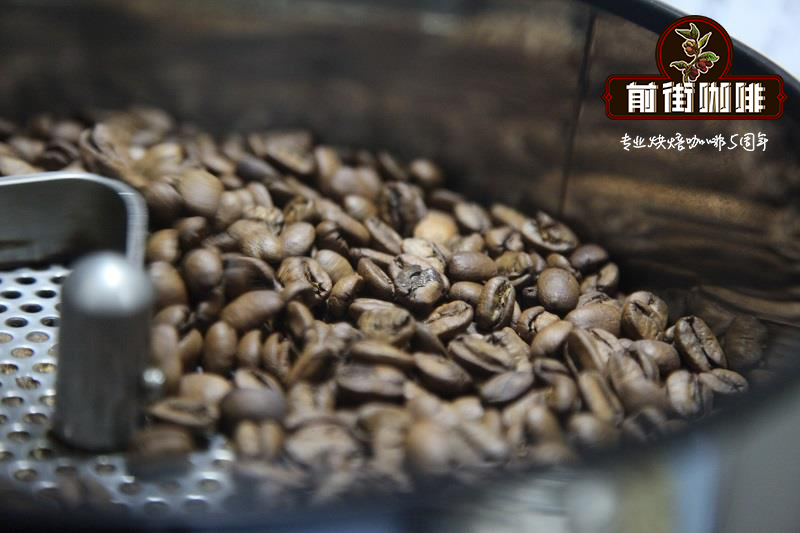What is the moisture content of raw coffee beans? What is the effect of moisture content of raw beans on baking?

What is the moisture content of raw coffee beans?
Although the raw coffee beans that are ready to be roasted look dry enough, they still contain water. A small amount of crystalline water dispersed in raw beans will be counted as moisture content.
Freshly harvested ripe coffee cherries on coffee farms contain about 45-55% moisture. After refining in the process of processing and drying, the water content will be reduced to 10-12%. One of the ways to refine coffee is called "water washing", which requires coffee cherries to be soaked in water to remove the peel and pulp and leave the seeds in the fruit (coffee beans); however, even washing does not increase the water content of raw beans, because coffee beans have to be dried after washing.
Good moisture content helps coffee produce balanced acidity and excellent aroma, which will improve the cup score. Experts have debated the most appropriate moisture content, but in the end, only 10-12% of the approximate range is generally accepted. Many bakers like the value of 12%, while the International Trade Center recommends a target of 11% for producers.
If the humidity is stable throughout the process, the coffee bean should maintain this moisture content until it enters the oven. However, some climate changes may lead to further water loss in the whole process of transportation and storage. Of course, unless the bags of raw coffee beans are caught in the rain or soaked in water, it will not cause too serious impact.

Quality control in drying process
At the same time, some flowers may still be hanging on the coffee trees, and some coffee cherries are ripe and red. On most professional coffee farms, coffee crops will be inspected at multiple points during harvest and ripe coffee cherries will be picked by hand. This means that all coffee beans cannot be harvested at the same time and can not all be in the same drying stage.
Of course, it is important for farmers to label each batch of coffee and monitor the moisture content to avoid mixing batches with different moisture content. Because this may lead to inconsistencies in the quality of coffee beans.
There are many different ways to dry coffee: mechanical dryer, open-air exposure, tarp sun-drying, bed drying. . In a perfect climate, a high tanning bed facilitates the flow of air around the coffee, speeding up drying while avoiding fermentation and mold infection.
Usually Canon will choose the sun frame bed to dry, but the open-air surface exposure at lower temperatures also has its advantages. Because the heat from the ground will also help the coffee to dry, but in order to dry evenly, it must be turned frequently to make the coffee beans heated evenly. If there is no airflow, exposure on the patio will become the most useful.
However, no matter how the drying method is, it is necessary to regularly use a rake to turn the raw beans during the drying process, which is of great help to the quality of raw coffee beans.

The risk of insufficient drying
As mentioned earlier, raw coffee beans can only be traded with a moisture content of less than 12.5%.
As the weight of the coffee trade increases, the percentage of water in a raw bean is sensitive to how much money a farmer can earn. There is also a health problem. When there is too much water, fungi and molds are easy to grow. Moldy beans also smell rotten, and these defective beans may destroy the whole batch of good beans. Even high-quality Arabica beans may be underdried and cause stench and decay.
Storing raw coffee beans in a clean and hygienic way can reduce the risk of mildew. However, in order to completely eliminate the possibility of mildew, it is still necessary to properly dry and store raw beans.
Like insufficient drying, excessive drying can have a profound impact on the cost of farmers. Farmers have to pack more raw beans in bags to make up for the weight loss. As a result, in large-scale coffee plantations, farmers may throw away whole bags of coffee beans that fail in dryness. As moisture may be lost during transportation, farmers will try their best to fill the bags.
Excessive dryness can also affect the quality and taste of coffee. Raw beans with a moisture content below 9% can feel the aroma of roasted coffee without baking, but it will also affect the freshness and brightness of the coffee with the loss of water. If the moisture content is less than 8%, then baking is meaningless. As mentioned above, raw coffee beans with less than 8% moisture content should not be shipped at all.
Relationship between roasting and moisture content of coffee
Water content is also important in the process of roasting coffee. Because water is a medium for conducting heat, the water in the beans helps transfer heat to the center of the beans. As a result, due to too little moisture, the surface of the raw bean is baked too quickly and charred, while the interior is still not warm enough.
Or you may say that the temperature of the roaster can be adjusted, the baking time is longer, and the heating up is slower. In the coffee roasting process, the slow roasting process will make the coffee beans have a smoky taste, which is also a bad result.
The moisture content of coffee is very important to roasters and farmers. The best moisture content is about 10-12%. Only in this way can raw coffee beans bake a balanced sour taste and excellent aroma, and farmers can get a good and reasonable reward.
Important Notice :
前街咖啡 FrontStreet Coffee has moved to new addredd:
FrontStreet Coffee Address: 315,Donghua East Road,GuangZhou
Tel:020 38364473
- Prev

What's the difference in flavor between sun blue mountain and water washed blue mountain? How to brew blue mountain coffee in the sun
Blue Mountain Coffee has always been washed with water, and its mellow and balanced taste is impressive. Until 2019, Blue Mountain Coffee began to conduct a sun treatment experiment, and began to export small quantities of sun blue mountain coffee for the first time in 2020. In this issue, the coffee brewing laboratory will compare the difference between Lanshan No. 1 sun-treated coffee and water-washed coffee. Comparative experimental book of brewing and cooking
- Next

New Guinea Butterfly Dance Manor Coffee Flavor introduction what is Little Blue Mountain Coffee?
New Guinea Butterfly Dance Manor Coffee Flavor introduction what is Little Blue Mountain Coffee? Butterfly Dance Manor is located in the western highlands of Papua New Guinea, planted about 1800 meters above sea level, and the tree species are from the Blue Mountains of Jamaica. This coffee is grown by small farmers and then purchased by bean merchants for further refined coffee. The beans are full, round and slightly longer, and the color is green. Characteristic grass and walnut
Related
- Beginners will see the "Coffee pull flower" guide!
- What is the difference between ice blog purified milk and ordinary milk coffee?
- Why is the Philippines the largest producer of crops in Liberia?
- For coffee extraction, should the fine powder be retained?
- How does extracted espresso fill pressed powder? How much strength does it take to press the powder?
- How to make jasmine cold extract coffee? Is the jasmine + latte good?
- Will this little toy really make the coffee taste better? How does Lily Drip affect coffee extraction?
- Will the action of slapping the filter cup also affect coffee extraction?
- What's the difference between powder-to-water ratio and powder-to-liquid ratio?
- What is the Ethiopian local species? What does it have to do with Heirloom native species?

